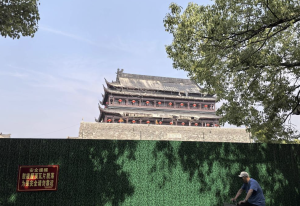
CSS中的bottom属性用于设置元素相对于其父元素的底部边缘位置。通过调整bottom属性的值,可以改变元素在垂直方向上的位置。下面将具体介绍bottom属性的作用和使用方法,并提供一些代码示例来说明。
- bottom属性的作用
bottom属性用于定位元素相对于其父元素底部边缘的位置,它是CSS中定位属性之一。使用bottom属性可以使元素沿着垂直方向上的底部边缘进行移动,不影响元素本身的大小。 - bottom属性的使用方法
bottom属性的取值可以是一个具体的像素值或者百分比值,也可以是auto或inherit。
-
使用像素值
可以使用像素值来指定元素距离父元素底部边缘的距离。例如,下面的代码将元素距离父元素底部边缘100像素的距离:.element { position: absolute; bottom: 100px; } -
使用百分比值
除了使用像素值外,也可以使用百分比值来设置元素与父元素底部边缘的距离。百分比值是相对于父元素的高度计算的。例如,下面的代码将元素距离父元素底部边缘的距离设置为父元素高度的50%:.element { position: absolute; bottom: 50%; } - 使用auto和inherit
auto是bottom属性的默认值,表示元素将按照正常的文档流进行布局。如果想要将bottom属性重置为默认值,可以使用auto。
inherit表示元素将继承父元素的bottom属性值。例如,下面的代码将元素的bottom属性值设置为继承父元素的bottom属性值:
.parent {
position: relative;
bottom: 100px;
}
.child {
position: absolute;
bottom: inherit;
}
-
代码示例
下面是一个完整的代码示例,展示如何使用bottom属性来定位元素的底部边缘:<!DOCTYPE html> <html> <head> <style> .container { position: relative; width: 300px; height: 300px; background-color: gray; } .element { position: absolute; bottom: 20px; width: 100px; height: 100px; background-color: red; } </style> </head> <body> <div class="container"> <div class="element"></div> </div> </body> </html>在上面的例子中,一个容器元素被创建,并设置为相对定位。然后在容器内部创建一个元素,并使用绝对定位,通过设置bottom属性为20px,让元素距离容器底部边缘20像素的距离。
通过阅读本文,我们了解了CSS中bottom属性的作用和使用方法,并提供了一些代码示例来说明。通过使用bottom属性,我们可以灵活地调整元素在垂直方向上的位置,使页面布局更加自由。
© 版权声明
文章版权归作者所有,未经允许请勿转载。
THE END




















































暂无评论内容